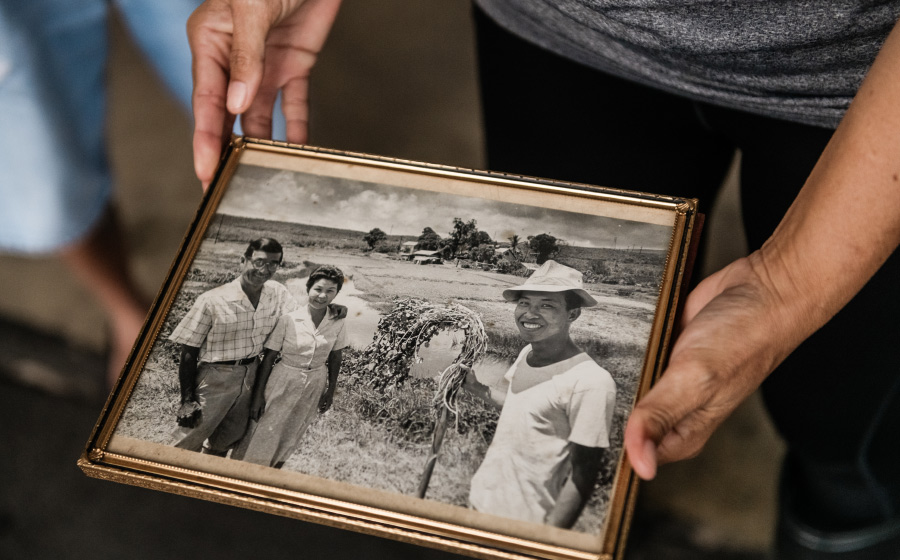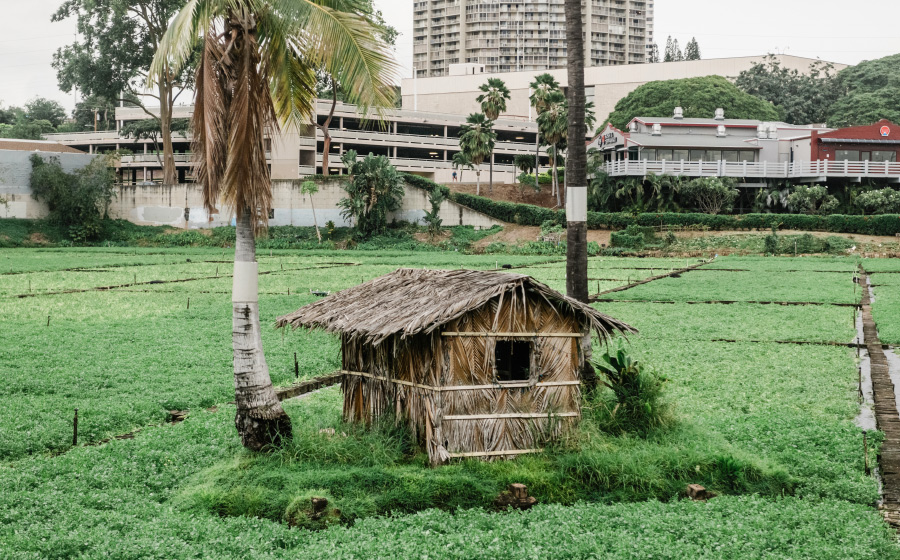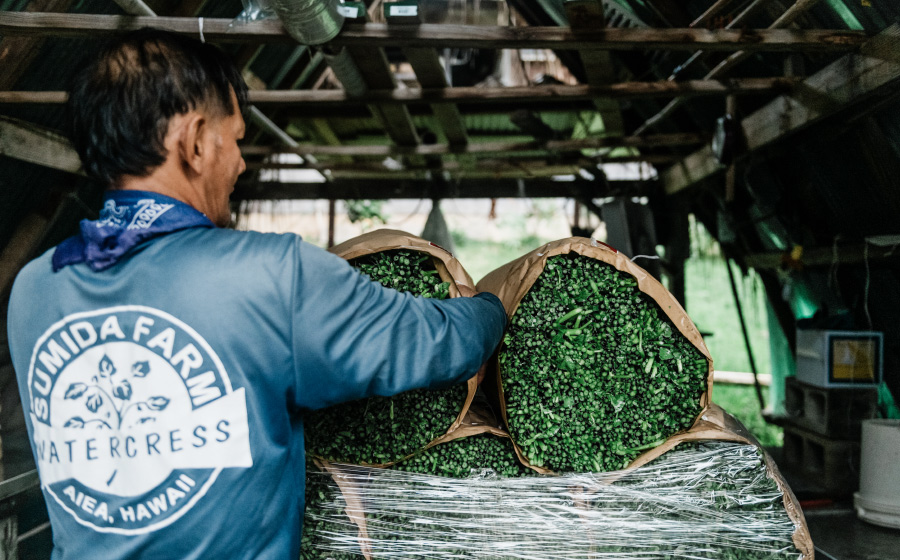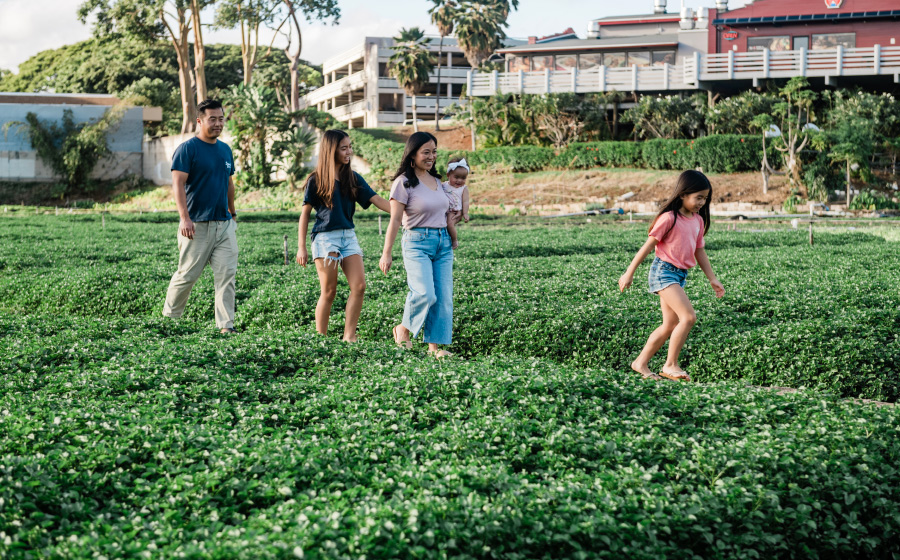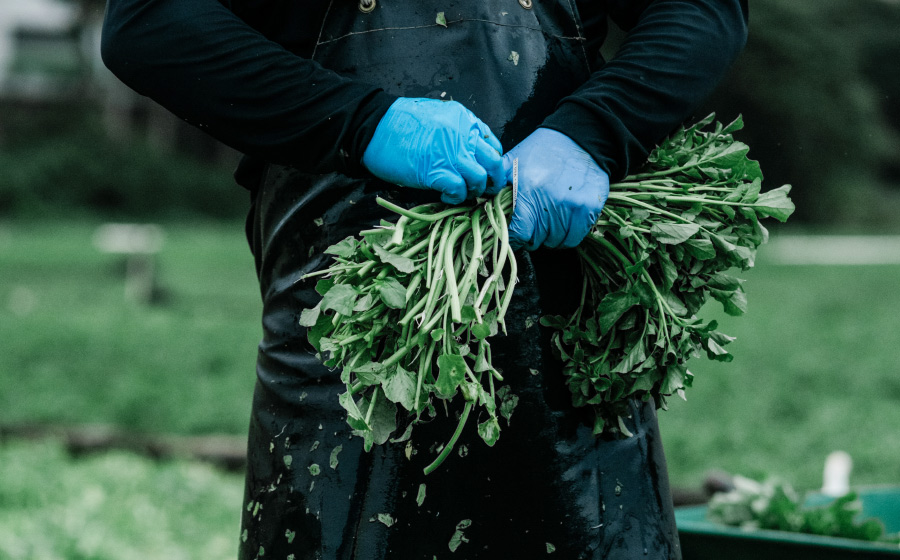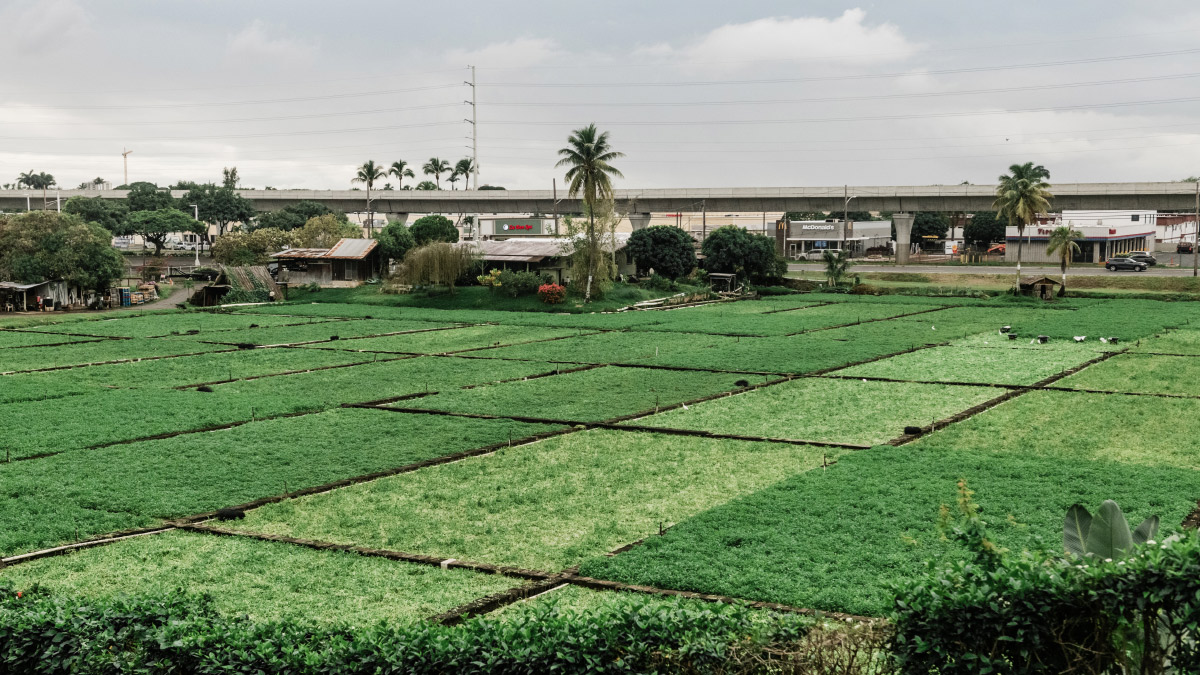At the nearly 100-year old Sumida Farm, the wonders of watercress endure.
Anyone who grew up in Central O‘ahu likely knows Sumida Farm. With fields of lush watercress greeting drivers on commutes down Kamehameha Highway, the nearly 100-year-old farm has stood as a beacon of green through ‘Aiea’s concrete corridor, a reminder of a bygone era when farming was central to the area, as well as to the islands itself.
“Everything you see around us used to be farmland,” says Emi Suzuki, the farm’s fourth-generation owner and its current president. “Hawaiians were farming here from mauka to makai for centuries before, and even just a generation back, you had unobstructed views to the mountains. It’s crazy to think that we would be one of the last farms in the ahupua‘a.”
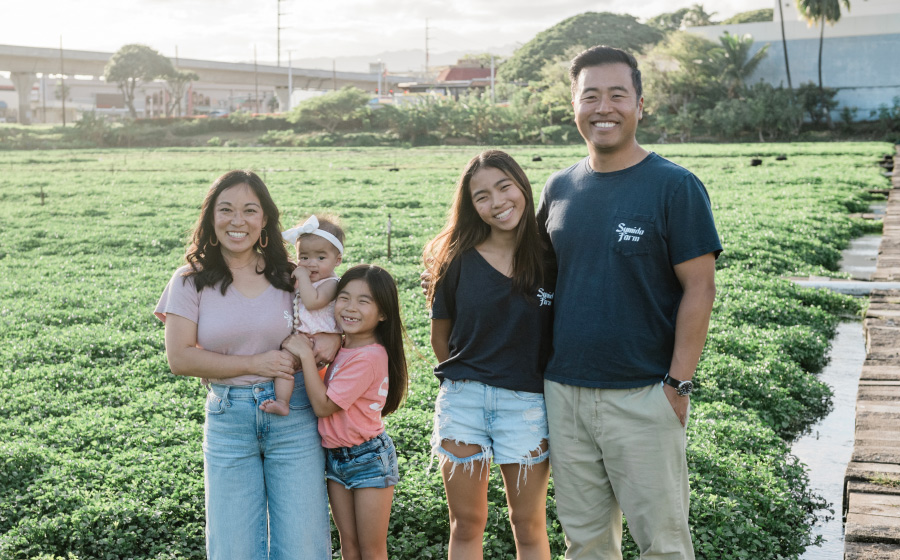
Sumida Farm was started in 1928 by Emi’s great-grandparents Makiyo and Moriichi Sumida on five acres of land fed by Kalauao Springs, the area’s freshwater aquifer for more than a millennium. The water, untainted by animal waste runoff from mountain streams or development over the years, remains pure enough to drink and is the farm’s most valuable resource. Bubbling at a cool, constant 67 degrees, the 5 to 8 million gallons of water that flows daily across the farm’s 10 acres enables it to harvest nearly 200 tons of watercress each year, or 70 percent of the state’s watercress supply. “Without the water,” Emi says, “there is no watercress, no farm, and no nourishment for the island.”
Although she was raised primarily on the mainland, her parents both distinguished university professors, Emi always had a profound affinity for the farm, spending summers and family vacations in its fields. “Growing up in small college towns, I was always the minority, so coming back to Hawaiʻi, where more people looked like me, ate the foods I ate, I felt very connected here,” she says. “Just like for anyone who has grown up here, the farm has always been the same—literally, it has looked the same for decades—so even though it wasn’t home, it always felt like home.”
So, when the family began to wonder who would assume operations after Emi’s aunt, Barbara Sumida—who had been running the farm with her brother David for more than 30 years—the couple felt compelled to raise their hands. In 2018, Emi and her husband, Kyle, began the transition to take over operations, with a phased plan to learn the business over the next seven to nine years. Then, in January 2020, Barbara was diagnosed with an aggressive form of brain cancer and passed away six weeks later. “Emi flew to Hawaiʻi trying to help,” Kyle recalls, “but she literally didn’t have passwords to log in to their computer, let alone a guide for how to run a farm.”
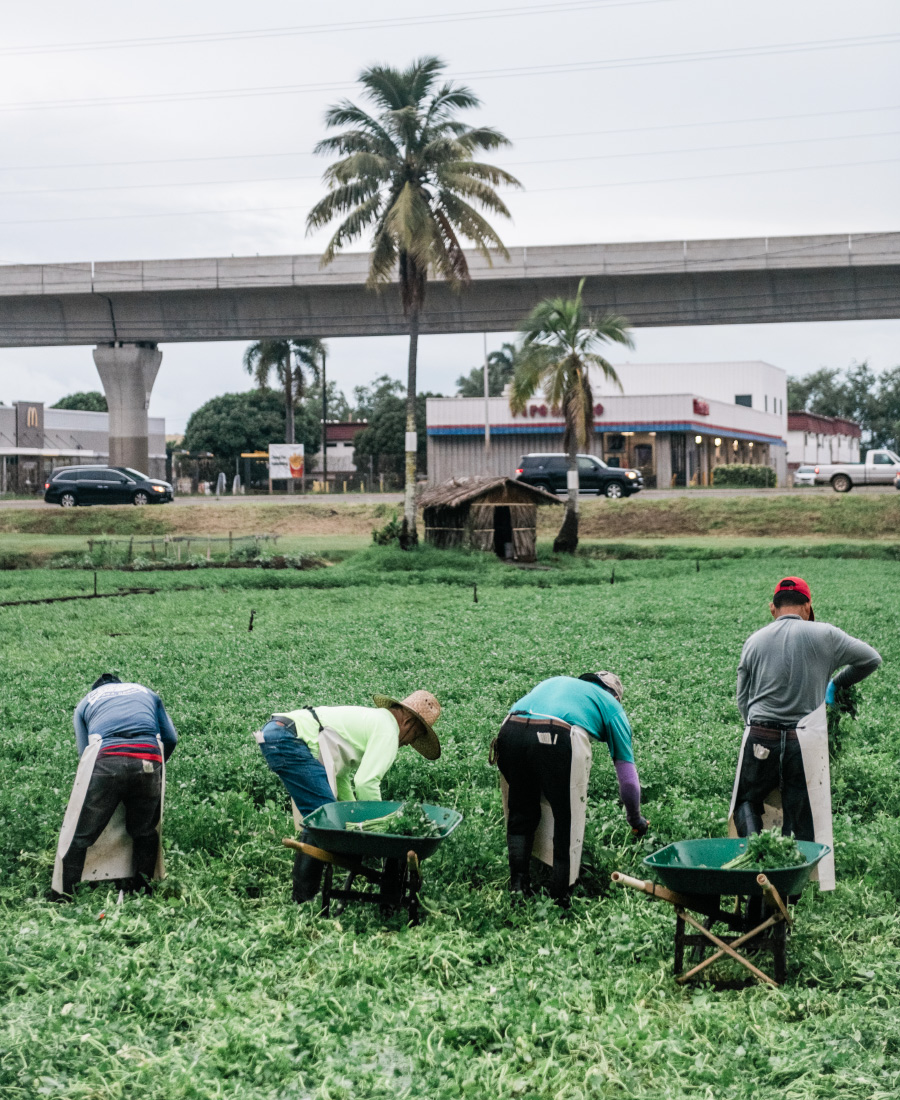
Two months later, the pandemic hit, and the city locked down; travel was restricted into the islands. But with experience in managing high-stress situations for large corporate companies, the Seattle couple was primed for the position. Through multiple mandated 14-day quarantines, Kyle and Emi, with their two young daughters in tow, were able to pull the farm past its moment of crisis. “The first two years was really about stabilizing,” says Kyle, who quit his corporate job to manage the farm full time. “We’re finally getting to a place where we’re able to start planning outside of the day to day and more for the future.”
There are still many necessities that need to be managed, like upgrading the farm’s original aerial sprinkler system. (Pioneered in the 1980s by agronomist John McHugh and second-generation president Masaru Sumida, the sprinklers were developed as a pesticide-free way to combat the diamondback moths that nearly decimated Hawaiʻi’s watercress industry.) These days, however, the duo is focused on community outreach, sharing stories, family history, and recipe ideas across social media. They have also resumed the weekly elementary school field trips to the farm that, for years, had been led by their uncle, David Sumida, before the pandemic put them to a halt.
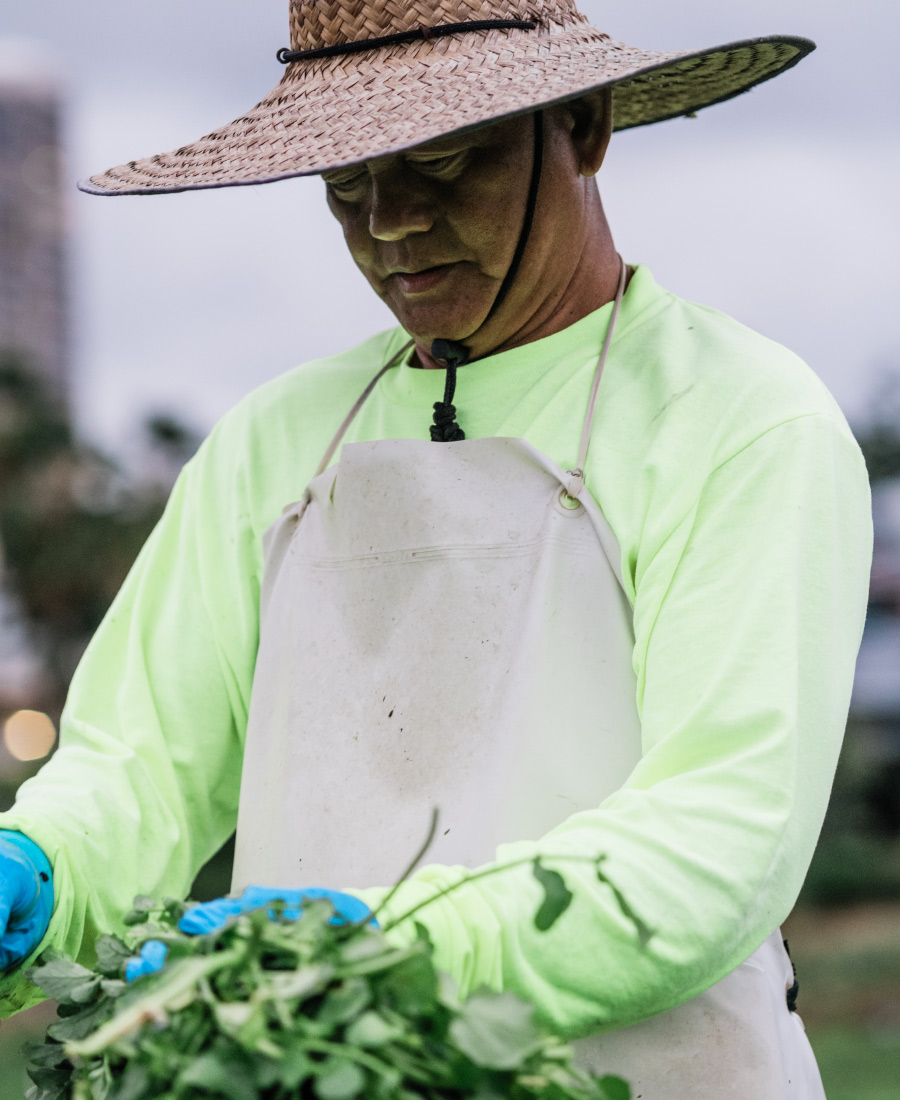
Visiting keiki get to see firsthand where their food comes from, along with the laborious system it takes to process the watercress, each 1-pound bunch hand-harvested and handwashed by the farm’s dedicated workers. They get to wade around in the fields, tip over rocks to look for crayfish, and tousle the watercress’s curly greens to witness the ladybugs and damselflies that keep pests at bay. Then, they eat, sampling innovative takes on a local staple prepared by the farm’s chef, like watercress soda and watercress cream cheese dip. “We’re lucky if even three out of 60 kids have tried watercress before coming to our farm,” Emi says. “By the end, they’re all shouting, ‘Watercress is my favorite vegetable!’”
The farm’s accessibility and proximity to an urban area was always important to the family. When Pearlridge Center was expanding in the 1970s, Emi’s grandfather Masaru fought the developers to establish the land as a historical greenway, preventing anyone from paving over the farm and plugging up Kalauao Springs. Since then, Sumida Farm has been a boon in more ways than one, providing wetland habitat for native animals like ‘ōpae‘ula (Hawaiian shrimp) and the endangered ‘alae ‘ula (Hawaiian moorhen) in addition to offering the community an opportunity to interact with a farm right in their backyard.
“When we faced challenges and felt the weight of the world on our shoulders, it was the community who told us, ‘You can’t give up. You gotta keep fighting,’” Emi says. “It makes us want to ensure that we keep going for another generation.”
Learn more, visit: sumidafarm.com
Image Gallery
